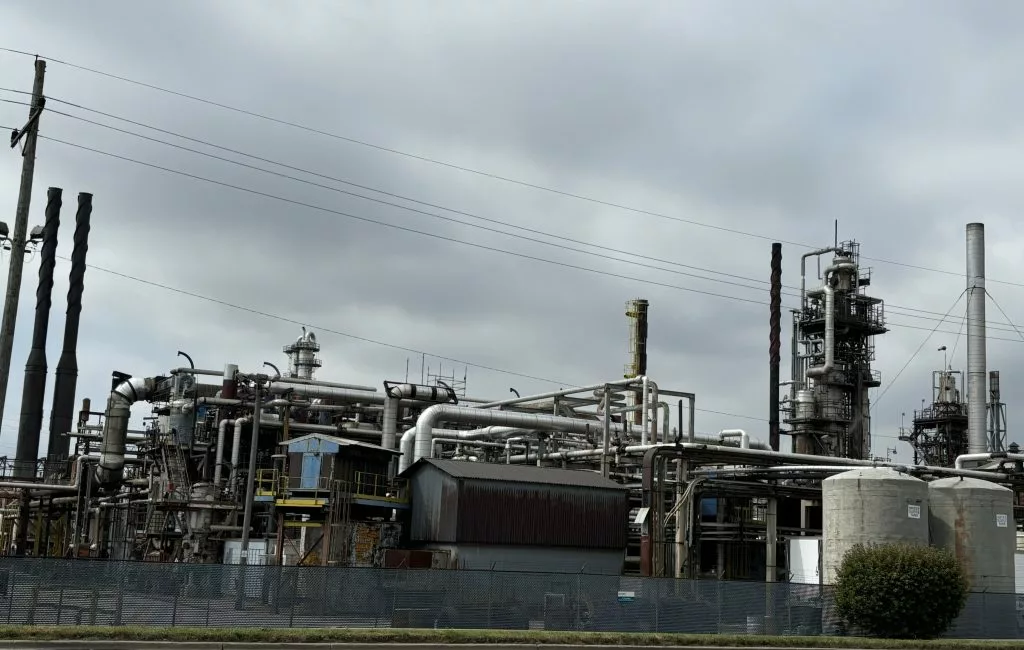
Who’s protecting the residents of Cicero and Stickney, IL, from the tons of toxic chemical emissions migrating from the massive, 36-acre Koppers coal tar plant at the corner of Laramie and Pershing roads? The danger is that these chemicals from Koppers are blowing into nearby residential neighborhoods and that the residents are breathing them. And they don’t even know it.
But I don’t see anyone protecting the residents against this threat. I don’t see anyone testing, for example, throughout these neighborhoods, and regularly, to see what concentrations of these toxic chemicals are getting to the residents and winding up in their lungs and bloodstreams. I don’t see that the residents are being warned of the chemicals’ dangers.
All I see is that Koppers’ emissions have made the air in the community surrounding the plant some of the most toxin-filled airin the country. Koppers knows this. So does the EPA. But the residents don’t.
Why is this all so dangerous for the residents?Six reasons:
While Koppers emits many chemicals–and many tons of chemicals—each year (see section below for details), the most dangerous are benzene and naphthalene. Public health agencies whose job it is to study and report on the dangers of benzene and naphthalene, link prolonged exposure to these chemicals with cancer. Specifically:
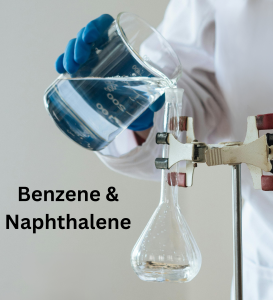
Benzene:USEPA and the International Agency for Research on Cancer (IARC) and the National Toxicology Program (NTP) have concludedthat benzene is a “known human carcinogen”; “carcinogenic to humans”; and “known to be a human carcinogen”, respectively. In other words, prolonged benzene exposure is known to cause cancer in humans.
What types of cancer? The cancers most frequently linked to benzene exposure areleukemias and lymphomas.More specifically:
Naphthalene:The State of California has declared that naphthalene is “known to the State of California to cause cancer in humans”. NTP has concluded that naphthalene is “reasonably anticipated to be a human carcinogen”. Both IARC and USEPA say the chemical is possibly carcinogenic to humans.
The cancers linked to prolonged naphthalene exposure includelung cancer and cancer of the larynx and colorectal system.
It is important to keep in mind that public health agencies study industrial chemicals like benzene and naphthalene regularly, and frequently conclude that they are more dangerous than previously believed, or are linked to more cancers than previously thought.
Clearly, benzene and naphthalene are dangerous. They do not belong in residential neighborhoods, and even less inside the bodies, lungs, and bloodstreams of human beings.
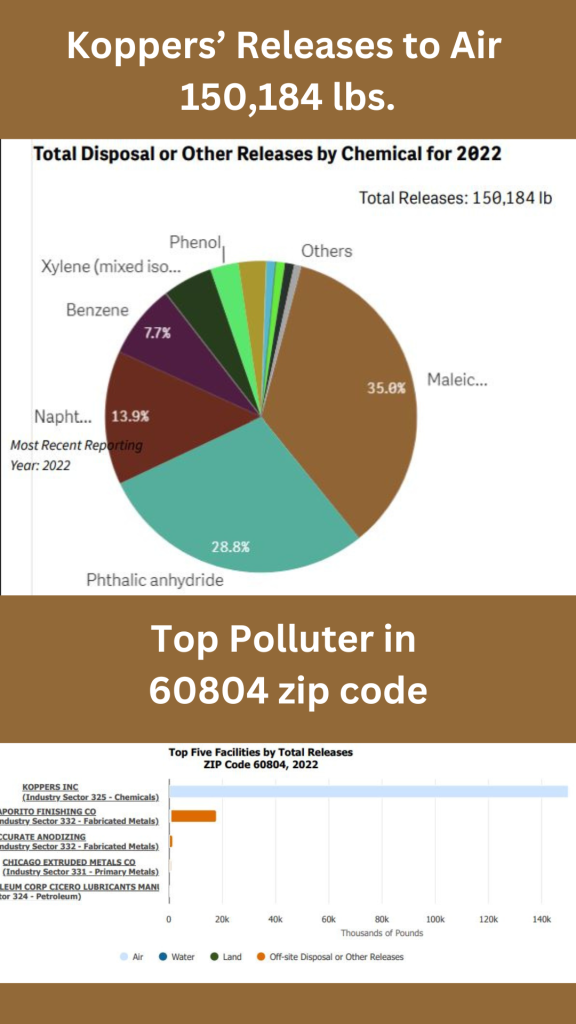
In the last year for which it reported emissions (2022), Koppers released into the Cicero and Stickney air nearly 21,000 pounds of naphthalene and 11,500 pounds of benzene. That’s 32,500 pounds of chemicals linked to cancer in a single year.
More than 16 tons.
Even worse, Koppers releases far more than just naphthalene and benzene. In 2022, Koppers also released other toxic chemicals as well, including chemicals known as xylene, maleic anhydride, and phthalic anhydride. When you add it all up, in that one year, Koppers released 150,184 pounds of these toxins.
That’s more than 75 tons.
Also, Koppers is by far the largest contributor to the air pollution in Cicero and Stickney. EPA has published information that allows us to see not only the quantity of toxic chemicals released by Koppers but also where Koppers ranks among other area polluters.
And when we look at the zip code (60804) that includes the Koppers plant, the EPA tells us that, among that area’s top 5 polluters, no other polluter makes any meaningful addition to the air pollution there.
The air pollution is caused essentially entirely by Koppers.
Koppers is not just the worst air polluter in the Cicero and Stickney area. It’s one of the worst in the entire country.
The federal government (EPA) has developed a scoring system to describe the hazard created by toxic chemical emissions from a polluter. It’s called the Risk Screening Environmental Indicators Hazard Score (RSEI Hazard Score). It’s a measure of the potential harm to human health based on (a) the toxicity of the chemicals a polluter is releasing, and (b) how many pounds of those chemicals it is releasing. When those two factors are considered, they form the polluters’ Hazard Score.
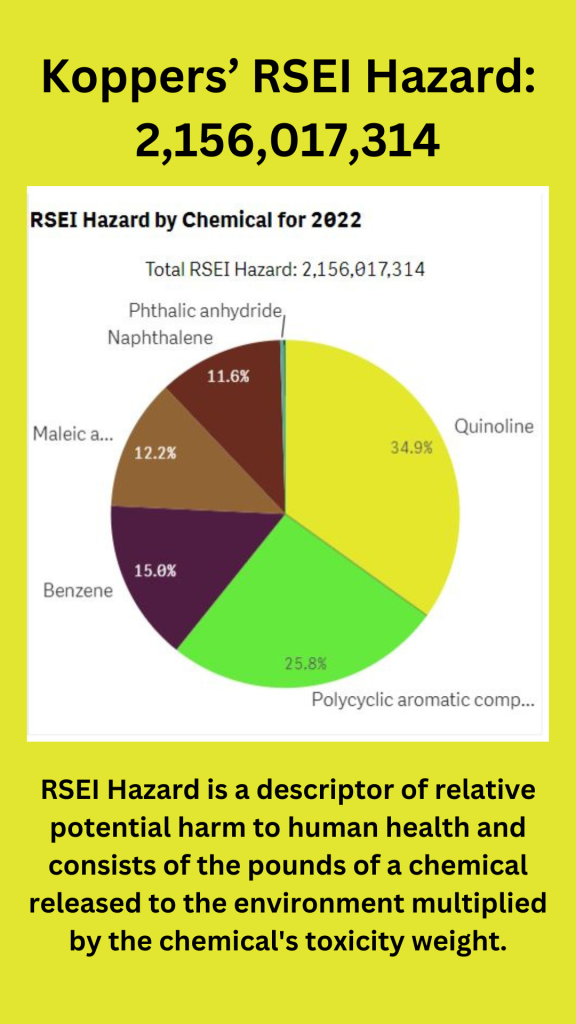
The EPA has also developed categories of RSEI Hazard Scores, so that polluters across the United States can be compared and ranked against one another, and we can know how big of a polluter a certain company is. There are 6 categories:
Obviously, the biggest hazardous polluters are those in the final category, with RSEI Hazard Scores over 1,000,000,000.
For the year 2022, the EPA has calculated Koppers’ Hazard score to be 2,156,017,314. That’s more than 2 X the RSEI Hazard Score that it takes to get in the sixth category.
Bottom line: Koppers is one of the country’s most hazardous polluters.
I’ve visited the neighborhoods surrounding the Koppers plant. Rows and rows of beautifully maintained homes. It’s immediately apparent that the residents of those communities are very proud of their homes and really care for them.
Sadly, however, hundreds of those homes are within one-half mile of the Koppers plant, and hundreds more are within one mile.
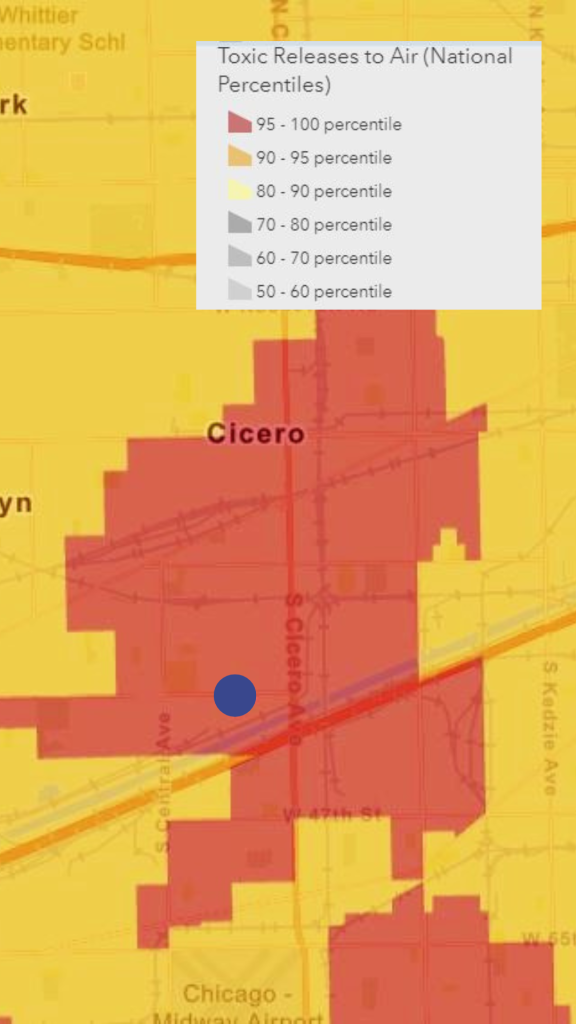
Well within reach of the many tons of toxic chemicals blowing out of the Koppers plant each year.
The EPA also shows us the impact of Koppers’ tons of emissions to the air in the community surrounding the plant. In other words, the air that the residents in those beautifully maintained homes actually breathe.
The EPA map color codes the area surrounding the Koppers’ plant according to how contaminated its air is. And you can see that the area immediately surrounding the plant—which includes many hundreds of homes filled with residents—is coded in a crimson color.
That crimson coding means, according to the EPA (see categories in the upper right on the graphic), that this area’s air ranks inthe top 5% of the most polluted air in the country. Thousands of residents live in homes in the crimson-coded area.
Clearly, these residents are breathing dangerous air.
The homes in these air-polluted, crimson-coded areas of Cicero and Stickney are filled with children, in the area’s homes, schools, daycare centers, and playgrounds. Public Health experts, and our common sense, tell us that breathing toxic chemicals is even more dangerous to children than to adults.

This is especially true of carcinogens. Cancer-causing chemicals can damage (or “mutate”) the cells in our body. The problem for children is that their cells are multiplying rapidly—that’s the growth process.
But if those cells rapidly multiplying inside a growing child’s body are damaged by contact with carcinogens, then damaged cells are rapidly multiplying, creating an environment where cancer (and other illnesses) can take hold and grow.
It is perhaps the most important point in all of this: children are especially at risk from breathing toxic chemicals, and profoundly so when they are breathing some of the most toxin-contaminated air in the country.
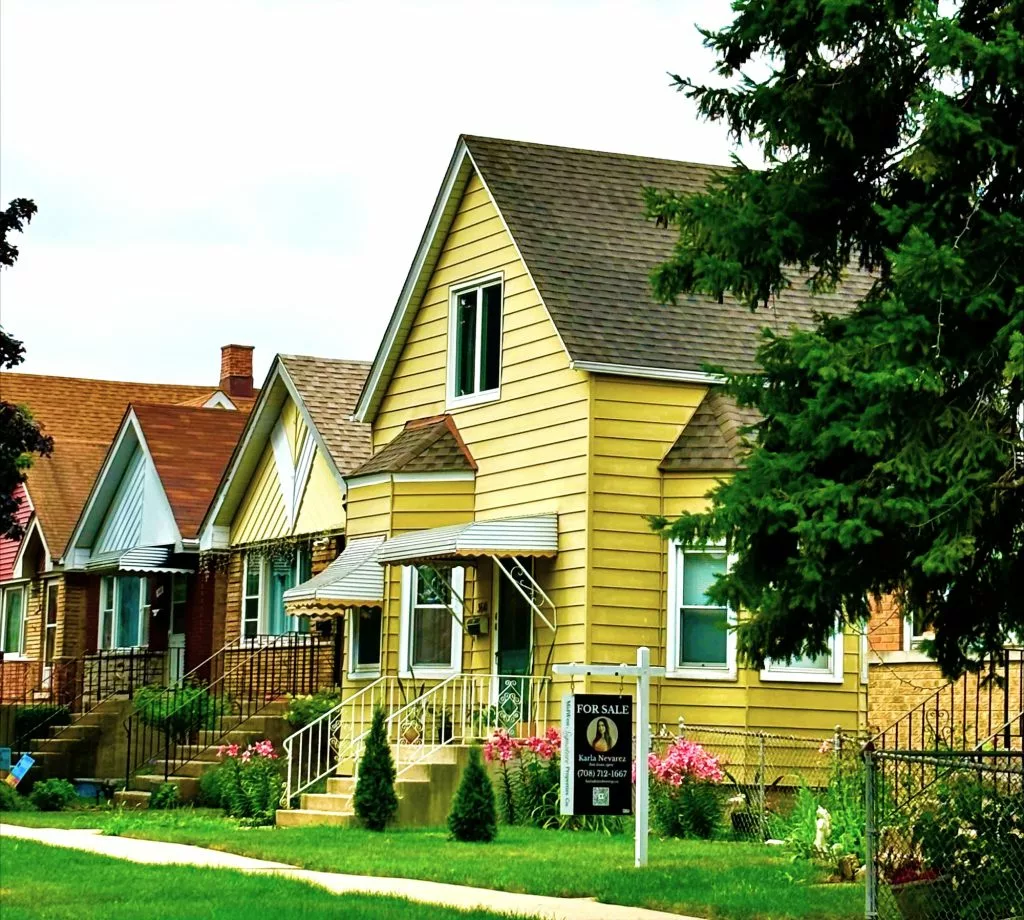
The best and most effective way to protect the children of Stickney and Cicero and their neighbors from the dangers of breathing Koppers’ toxic emissions is to not allow the emissions in the first place. But, as you can see from the information above, neither Koppers nor the EPA seems interested in doing that.
EPA’s apparent lack of interest is particularly concerning since EPA’s job is to protect public health, and in fact, the residents of Stickney and Cicero are paying taxes to fund the agencies (like the EPA) that are supposed to be protecting them.
When a community is as polluted as the area surrounding Koppers is, anyone determined to protect public health would start by testing the air that the residents are breathing, to find out just how dangerous it is. Testing in the places where the residents spend their lives—homes, yards, schools, parks, churches, etc.—to learn precisely what chemicals the residents are breathing, and in what concentrations.
And the testing should be frequent in each area, because measured concentrations of toxic chemicals can change rapidly over time, since the chemicals are being carried by air currents from Koppers, and perhaps other places, as well.
I’ve neither seen nor heard of this kind of testing being done in the neighborhoods—either by Koppers or the EPA. My experience has taught me that polluters, and sometimes even government, don’t want to do this kind of testing because they don’t want to have to deal with the consequences.
Imagine the outcry, and pressure to drastically limit Koppers’ massive chemical emissions, that would follow if test results were to reveal high concentrations of chemicals linked to cancer in area homes, or even worse, in a school or daycare center.
And yet it is that consequence which is the very reason why the testing must be done. Any serious effort to protect the children and their families requires it.
So does simple human decency.
Please watch ourvideo on Koppers.
The Collins Law Firm is one of the top environmental litigation firms in the country. We have represented thousands of victims of chemical contamination and have successfully fought to win clean air, clean water, and millions in compensation for them. If you live near the Koppers plant and believe your cancer may be caused by the toxic emissions from the plant, contact us at (630) 527-1595.
For more information, please read these news articles:
Para más información, por favor lea estos artículos de noticias:
